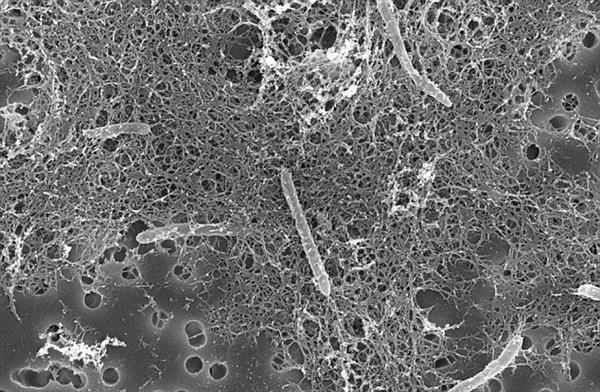Scientists discovered a strange rod-shaped bacterium 1.8 miles below the surface of the earth that can take energy from radioactive uranium in deep mines. This new discovery has led scientists to think about new forms of life and inspired people to think of the existence of extraterrestrial life on the planet that was previously believed to be impossible to survive, or to survive from cosmic rays.
There is no light at 1.8 miles (2.8 km) underground and there is no carbon and oxygen. The lack of material for these lives makes these places a desperate life. However, a rod-shaped bacterium (scientific name Desulforudis audaxviator) was discovered 1.8 miles underground. This tenacious life is not only not affected by cosmic rays, but instead uses radiation to survive. It grows by using products derived from uranium, thorium and potassium decomposing water in deep mines.

They have incredible energy from uranium radiation, subverting people's entire concept of the existence of life. Dr. Atley, an astrophysicist, was astonished at this.
"Can life in the universe exist in this way?"
The space outside the surface is full of cosmic rays. Cosmic rays are the collective name of the charged high-energy subatomic particles that are produced by the explosion of a star in the universe. Direct exposure to cosmic rays can destroy basic substances such as DNA. Simply, the Earth’s magnetic field and atmosphere will reject most of these deadly rays, so that life on earth may be thriving. Astronauts performing space missions must also be protected by layers of space suits.

The traditional concept of life believes that life originates from light and water. Green plants fix energy through photosynthesis and feed and animals to support complex biological chains. Constrained by this notion, when people look for extraterrestrials, their gaze is always directed toward those planets that are similar to the Earth as "having atmosphere and liquid water." Today's discovery has astronomers embarrassed.
There may not be a suitable sun in the universe to provide light and heat, but cosmic rays are inexhaustible. Some scholars have suggested that the use of cosmic rays may be limited to single-celled organisms such as bacteria, rather than multicellular organisms. But this is enough to make people eye-opener. According to the above example of gold-bearing bacteria, those life should exist in the solar system and beyond the solar system.
However, this "radioactive bacteria" also has its limitations. In order to survive on radiation without being harmed, the size of the bacteria is very small and the metabolism is forced to proceed at a very slow rate. "Although they nominally depend on radiation, their adaptability to radiation is poor, and a slight change in radiation is enough to kill them," Duncan Forgan of St. Andrews University told Science Journal.
Dr. Atley and his team are preparing to use high-energy X-rays to test the viability of gold bacteria - this is the closest human cosmic ray can simulate in the laboratory - if the gold ore is still full after torture And back, then scientists really have to revise the strategy for finding extraterrestrial life.
Laboratory Faucet,Laboratory Cold Water Tap,Laboratory Chemical Faucet Vertical,Laboratory Water Tap Grey
NARWILL IMPORT&EXPORT CO.LTD , https://www.narwill.com
![<?echo $_SERVER['SERVER_NAME'];?>](/template/twentyseventeen/skin/images/header.jpg)